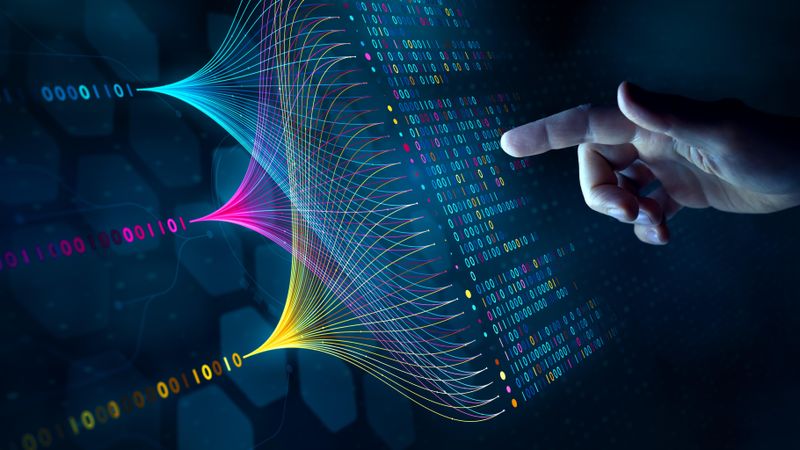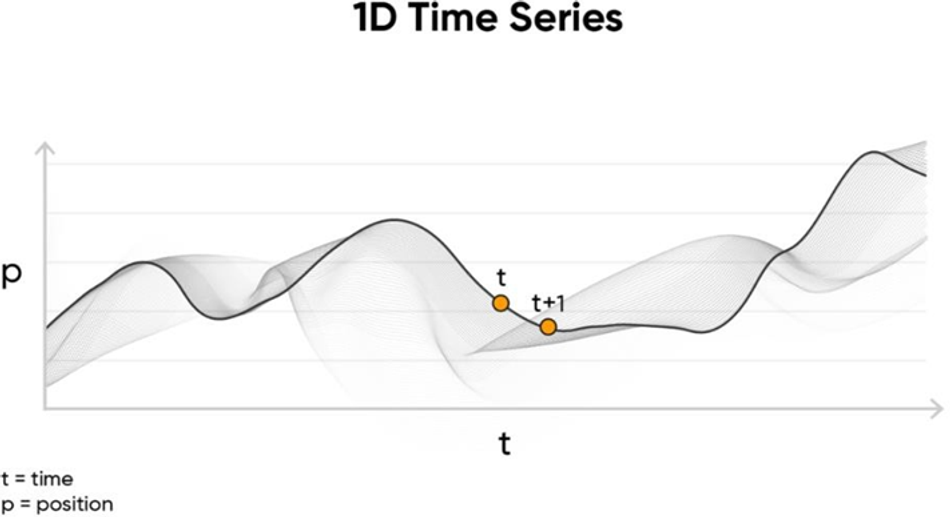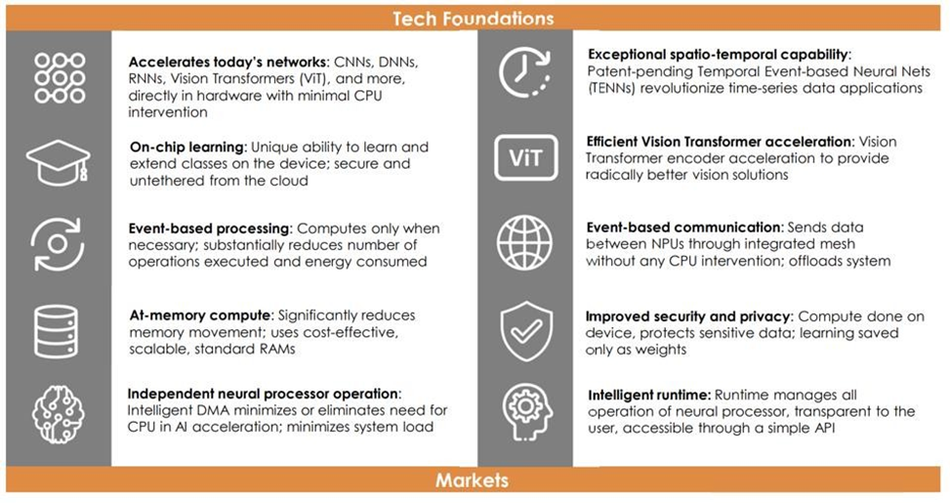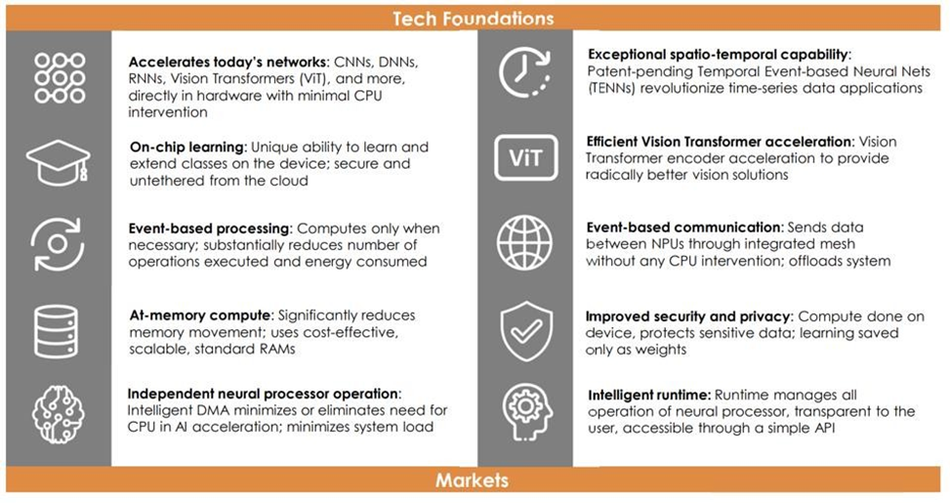The huge potential of sequential data analysis at the edge
How BrainChip's Akida technology is revolutionizing time series data analysis.
This article is based on an article titled, BrainChip Sees AI Gold in Sequential Data Analysis at the Edge, from the Cambrian AI website.
Amidst the whirlwind of excitement surrounding Large Language Model (LLM) generative AI, it's easy to lose sight of other AI domains that have seemingly dissolved into the shadows cast by ChatGPT's prominence. One underappreciated domain is the analysis of sequential data streams, which includes monitoring fluctuating stock prices and interpreting video feeds.
BrainChip has identified this niche — the adept handling of sequential data — as a pivotal niche for deploying its Akida technology. Akida stands out for its prowess in Event-Based Neuromorphic computing, adeptly handling various neural network architectures like Vision Transformers (ViT), Convolutional Neural Networks (CNN), Temporal Evolution Network (TENN), and Recurrent Neural Networks (RNN).
This article explores the need for efficient edge AI for time-series data.
Sequential data analysis
Sequential analysis refers to the process of analyzing and extracting insights from data that is collected and organized in chronological order. This data type typically involves measurements or observations taken at regular intervals over time. Time-series analysis techniques aim to understand data patterns, trends, and dependencies and make predictions or forecasts based on historical patterns.
A few use cases of sequential data analysis include:
1. Financial Analysis: Time-series analysis is extensively used in finance to study stock market trends, analyze economic indicators, and forecast future market conditions. It helps model asset prices, trends, risk assessment, and portfolio optimization.
2. Demand Forecasting: Sequential analysis is crucial in demand forecasting for retail, supply chain management, and manufacturing industries. By analyzing historical sales or demand data, businesses can predict future demand patterns and optimize their production, inventory, and supply chain accordingly.
3. Predictive Maintenance: Predictive maintenance can monitor equipment and machinery in real-time. Analyzing sensor data and historical patterns can help detect anomalies and predict potential failures, enabling proactive maintenance and minimizing downtime.
As well as applications in Energy Consumption Analysis and IoT Sensor Data Analysis.
The market size for applying AI in time-series data analysis is continually growing as organizations recognize the value of extracting insights and making accurate predictions from temporal data. While specific market size figures for this realm are not readily available, the broader AI market, including applications in time-series analysis, is expected to grow substantially. According to a report by Grand View Research, the global AI market size was valued at USD 62.35 billion in 2020 and is projected to expand at a compound annual growth rate (CAGR) of 40.2% from 2021 to 2028. This growth encompasses various AI applications, including time-series analysis, across multiple industries.
Introducing the Dimension of Time to Neural Networks
Traditional CNNs have been around for 30+ years and combine multiple hidden layers trained in a supervised manner. These are sequential and hence referred to as feed-forward neural networks. Bi-directional networks, also called RNNs, invented at the turn of the century, added capability for more complex learning, such as language modeling. But for applications to time series, a machine learning engineer needed a combination of CNNs and a temporal network for spatial-temporal analysis. While academia developed networks that did temporal convolution, they have yet to be power efficient or easy to train to make it to the far Edge.
Temporal Event-based Neural Networks
Temporal Artificial Neural Networks (TENNs). This approach simplifies training and reduces model size while maintaining accuracy, resulting in improved performance and efficiency for Edge AI devices.
Using TENNs for data analysis offers several advantages, such as the ability to learn the temporal structure of the data, which is crucial for tasks such as forecasting and anomaly detection. TENNs can make predictions for future time steps, and they are capable of learning from large datasets of time series data. Overall, these features make TENNs a valuable tool for data analysis in various domains.
Beyond traditional Edge time series applications, BrainChip suggests that TENNs could minimize or eliminate the need for DSP filtering of raw audio signals and vital signs in health monitoring. Thus, offering compact solutions for wearable, hearing, and implantable devices with minimal power consumption is a significant advance for preventative healthcare.
Additionally, TENNs also excel at treating streaming inputs as a time series of frames, performing 3D convolutions composed of a temporal convolution on the time axis and a spatial convolution on the XY axis. This is efficiently achieved to improve the detection of higher-resolution video objects in low-power scenarios.
TENNs offer developers the flexibility to configure them in either buffered temporal convolution or recurrent modes, enabling them to adapt the network to their specific application requirements. Furthermore, TENNs can be efficiently trained on parallel hardware, such as GPUs and TPUs in the cloud, similar to convolutional networks, while retaining the compactness of RNNs for efficient inference at the edge. This approach helps to minimize the exponentially growing cost of training, which is a constant concern.
Akida 2nd Generation Processor and TENNs
The BrainChip Akida processor is a digital portable processor IP inspired by the energy-efficient functionality of the human brain. Unlike traditional neuromorphic approaches, which are analog, it utilizes fully digital technology and offers a range of capabilities, including image classification, semantic segmentation, odor recognition, and time-series analysis. It supports various neural network architectures, including TENNs.
The Akida processor utilizes highly parallel event-based neural processing cores, merging neuromorphic processing with native support for traditional convolutional capabilities and functions, along with hardware support for TENN networks. Its neuromorphic processing cores communicate using sparse, asynchronous events, making it ideal for efficient time-series data analysis and managing high-speed, asynchronous, and continuous data streams.
BrainChip’s Akida allows the analysis of vision, video, and three-dimensional data as a time series, improving video object detection. Akida's support for spatial-temporal convolutions enhances speed and reduces energy consumption. This ability is possible because the processor features a high-speed, low-power digital design optimized for edge computing applications, offering real-time processing and low-latency analysis. It can handle structured and unstructured data, learning and recognizing patterns from streaming data, making it suitable for time-series data analysis.
Additionally, Akida includes a traditional CNN accelerator, as well as TENN and ViT logic, providing a comprehensive solution for sequential processing. The Akida processor is particularly effective for real-time data classification, anomaly detection, and predictive analytics. Consequently, the second-generation Akida processor, with TENN support, extends its efficiency and accelerated hardware solutions to multi-dimensional applications like video object detection and vision using event-based processing paradigms.
Conclusion
The rapid expansion of the AI field has primarily focused on image processing and LLMs, leaving a significant gap in the development of sequential data analysis. BrainChip's Akida technology, featuring TENNs, simplifies training, reduce model size, and enhance performance and efficiency in time series data analysis.
This innovative approach can be applied in different industries, including finance, demand forecasting, predictive maintenance, energy consumption analysis, and IoT data analysis, meeting the growing demand for effective AI solutions in these domains. The Akida processor extends its efficiency to multi-dimensional applications improving real-time data analysis, predictive analytics, and video object detection for event-based processing.




